Table of Contents |
The art and architecture that you will be covering today encompasses the time period from 1666 to 1710. Note that this is just a short period within the time of Louis XIV’s reign, which was actually more than 72 years.
This lesson will focus geographically on the city of Versailles, which is just southwest of—and quite close to—the city of Paris.
This period in France was dominated by the personality, politics, and propaganda of King Louis XIV, also known as the Sun King. His reign of over 72 years is the longest of any French monarch and was supported by rigorous control, using art and architecture as propaganda or authority to rule. Louis XIV firmly adhered to the doctrine of the divine right of kings, which held that monarchs were appointed by and accountable only to God. This belief justified his absolute authority and the centralization of power in his hands. He famously declared, “L'État, c'est moi” (“I am the state”), encapsulating his view of his role as the sovereign ruler of France. One of the key strategies Louis XIV employed to establish and solidify his rule and legacy was the commissioning of numerous works of art and architectural projects.
In the painting below, the artist conveys a powerful image of the monarch. The king looks toward the viewer, elaborately dressed in his coronation robes, gilded sword and scabbard, wig, leggings, and red-heeled shoes.

Louis XIV
Museum of the History of France, Paris
1701
Oil on canvas
The painting’s overall effect is impressive and creates an image of the absolute authority of the king, which was his intent. When the king was away, nobles and servants were to bow to this image in his absence.
The Palace of Versailles was a renovated royal hunting lodge that developed into a sprawling palace, park, and town. It is one of the most important examples of 17th-century French architecture and art. It was built as a means of controlling the nobility and as a tool for displaying the power and propaganda of Louis XIV.
As renovations to the east wing of the current palace in Paris—called the Louvre—were being carried out, the renovation of the royal hunting lodge at Versailles began as well. The Louvre, though then a palace, is now one of the largest and most renowned art museums in the world.
The construction of the Versailles Palace was an enormous project. It was the biggest French construction project of the 17th century, by far. It began with the king’s desire to renovate the hunting lodge at Versailles to turn it into a magnificent palace. The result, however, included not only a tremendous palace in the French Baroque style, complete with pavilions, but also a park and an adjacent city, all of which served to symbolize the power of the king.
Below is an aerial painting of the palace from the front. Notice that the palace is just a small part of a massive complex.
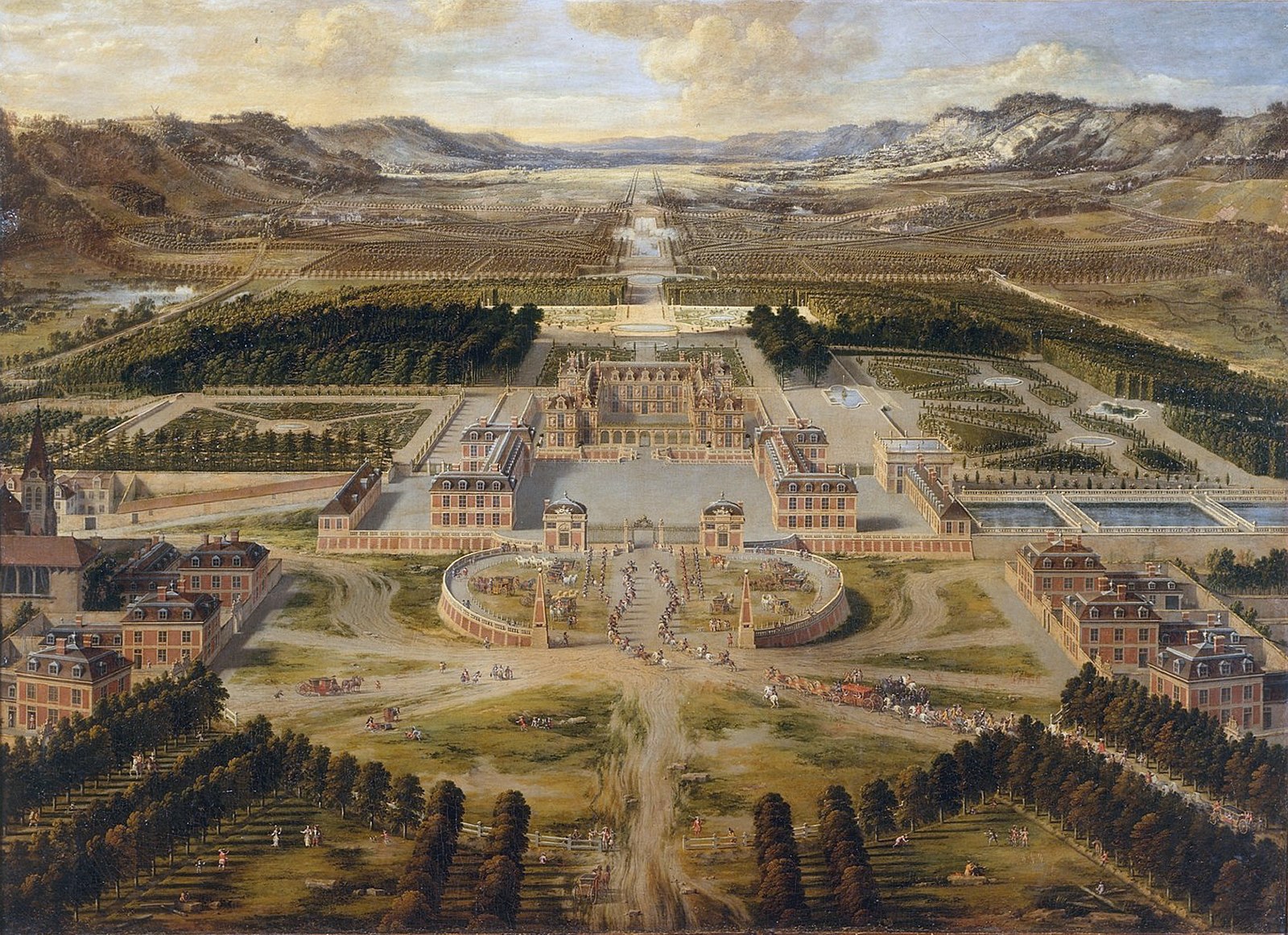
Palace of Versailles, Versailles, France
Museum of the History of France, Paris
1668
Oil on canvas
Below is an overhead view of the complete complex. The palace is in the lower section, just above the pink section—which represents the city—at the convergence of three main roads. Notice how the accompanying park occupies roughly two thirds of the whole plan. The enormous palace itself is dwarfed by the sheer scale of the Versailles complex as a whole.
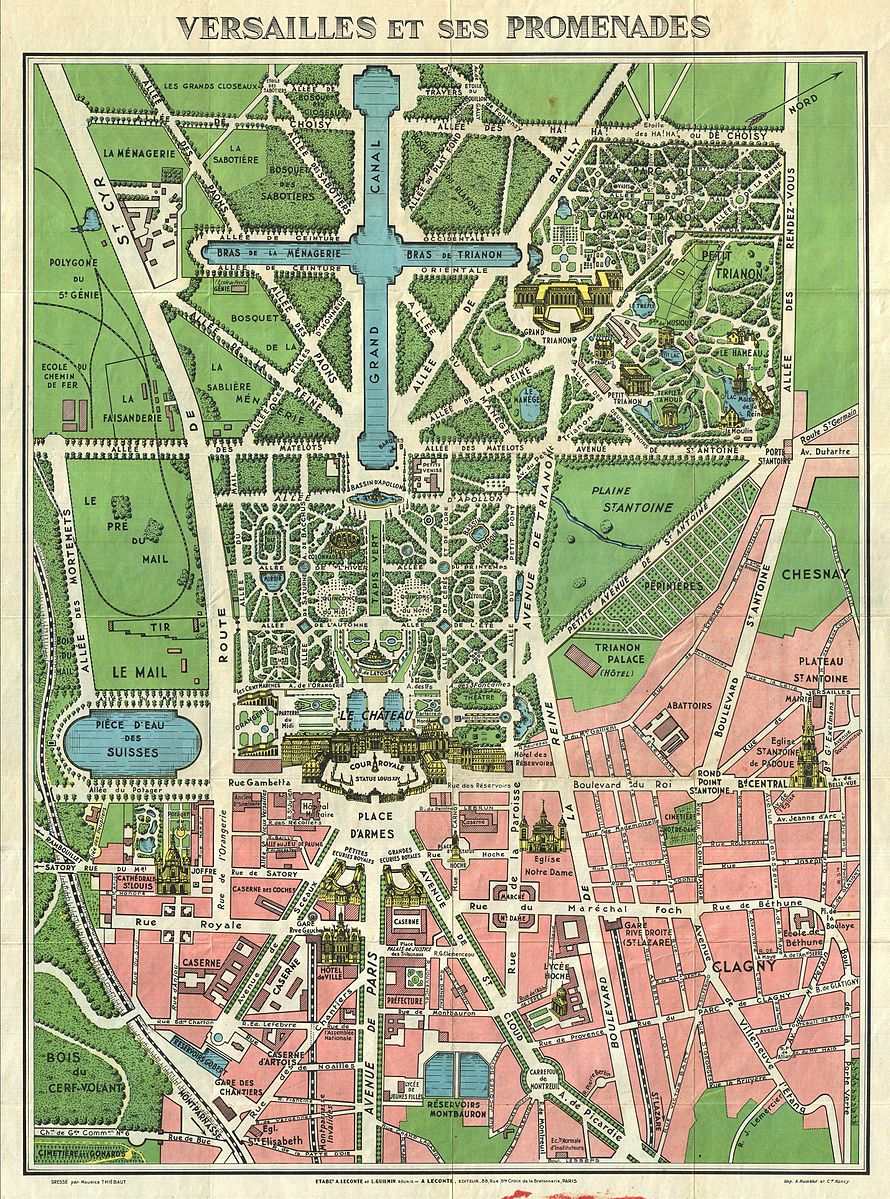
Map of Versailles
Circa 1925
A tourist map with a general plan of Versailles and bird’s-eye views of several notable features, including buildings, fountains, and statues. A similar map of Paris, titled Paris et ses Monuments, is printed on verso.
Here’s yet another view of Versailles that shows the plan horizontally, with the palace on the right. This image is a close-up of the park and the Grand Canal in the shape of a cross.
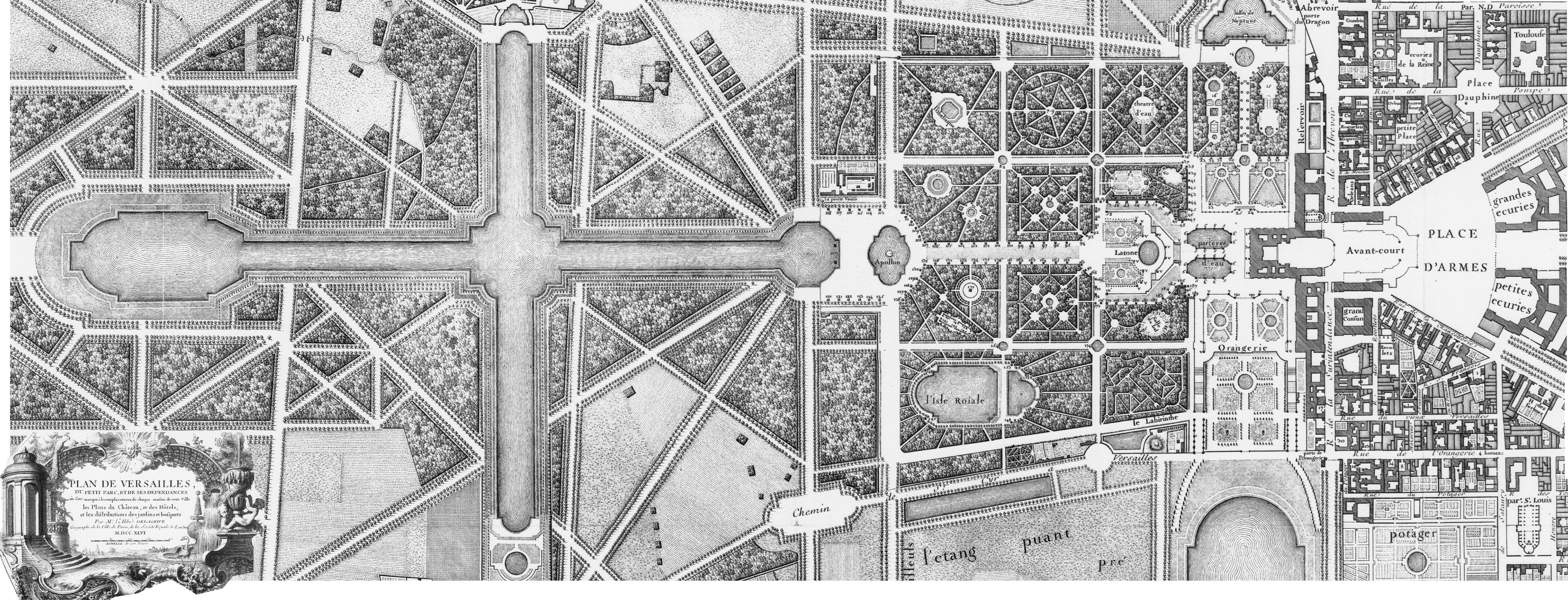
Versailles Plan
Bibliothèque nationale de France, Paris
1746
Engraving
Lastly, below is a close-up of the new city of Versailles, which became the capital of France in a sense, as this became the primary residence of the king, though Paris remained the actual capital. The palace is highlighted in blue within the complex.
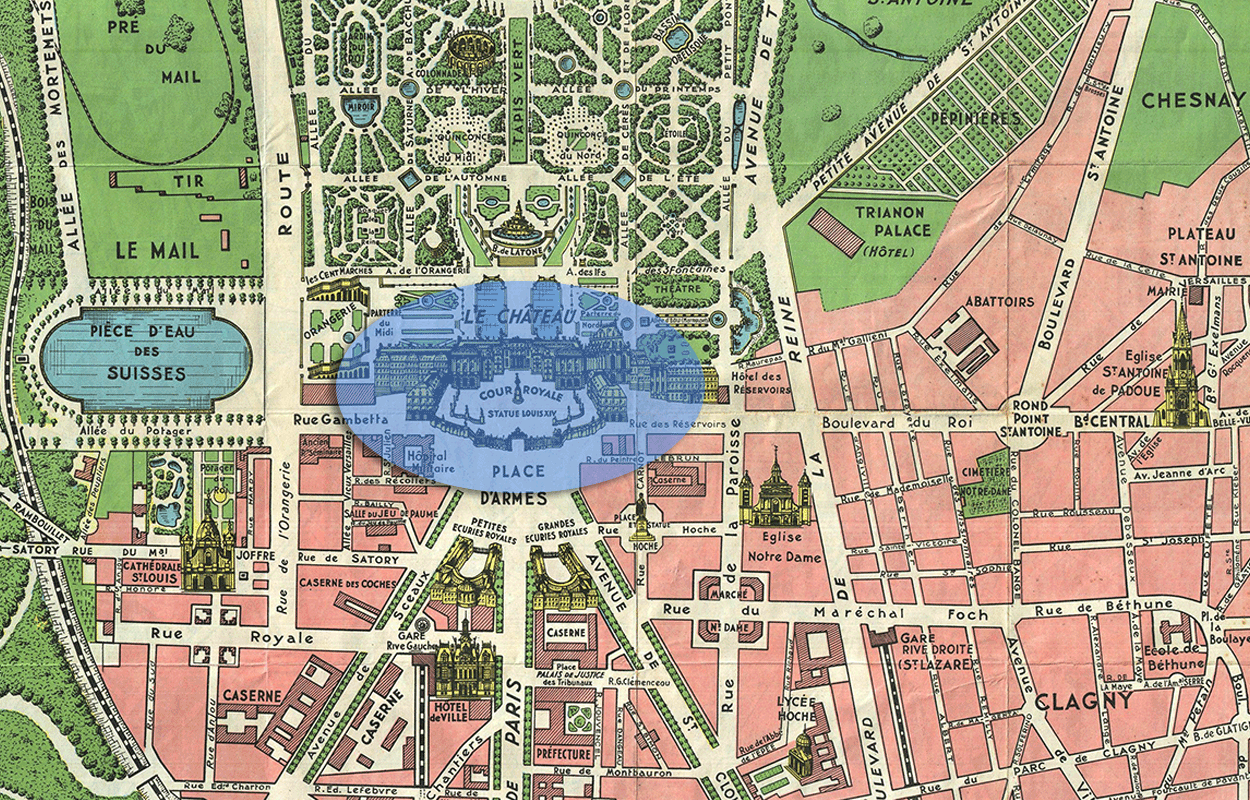
The sheer scale of the entire place is hard to imagine, as is the opulence and extravagance on display in the interior design. One of the most impressive examples is in the so-called “Hall of Mirrors.”
It’s a vaulted hallway filled with ceiling paintings by Charles Le Brun, depicting the 17 most important events in the king’s reign. The arches of the windows each feature the head of Apollo, who was a sun god, underscoring Louis’ moniker “The Sun King.” Decorations also include the busts of eight Roman emperors and eight statues of classical gods and goddesses, which are all references to classical Rome. By including these symbolic details from antiquity, the designers of Versailles were linking the king to the grand empires of the past and suggesting his comparable prestige.
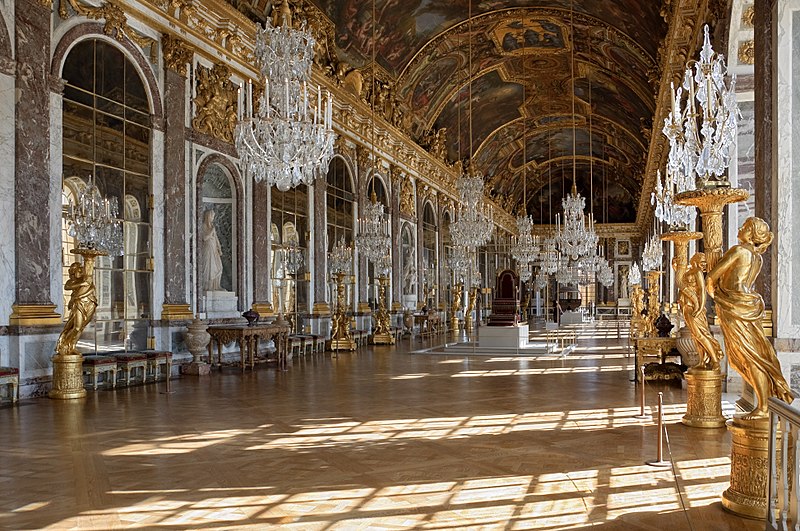
Galerie des Glaces (Hall of Mirrors)
Palace of Versailles, Versailles, France
1680
The hall is quite enormous: It’s roughly 240 ft long (about 60 ft less than an American football field), 35 ft wide, and approximately 42 ft tall. The hall is lined with mirrors that give the illusionistic impression that it is much larger than it already is. Every single element, down to the doorknobs, was designed specifically for the palace to make it the most glorious example of French art and architecture in existence.
References to classical design and themes can be seen in the statue shown below, which is located in the garden at Versailles. It depicts Apollo, the sun god—a reference to the Sun King of France, which is no coincidence. He’s being attended to by nymphs, and it’s an example of the classical influence of the artist and royal symbolism.
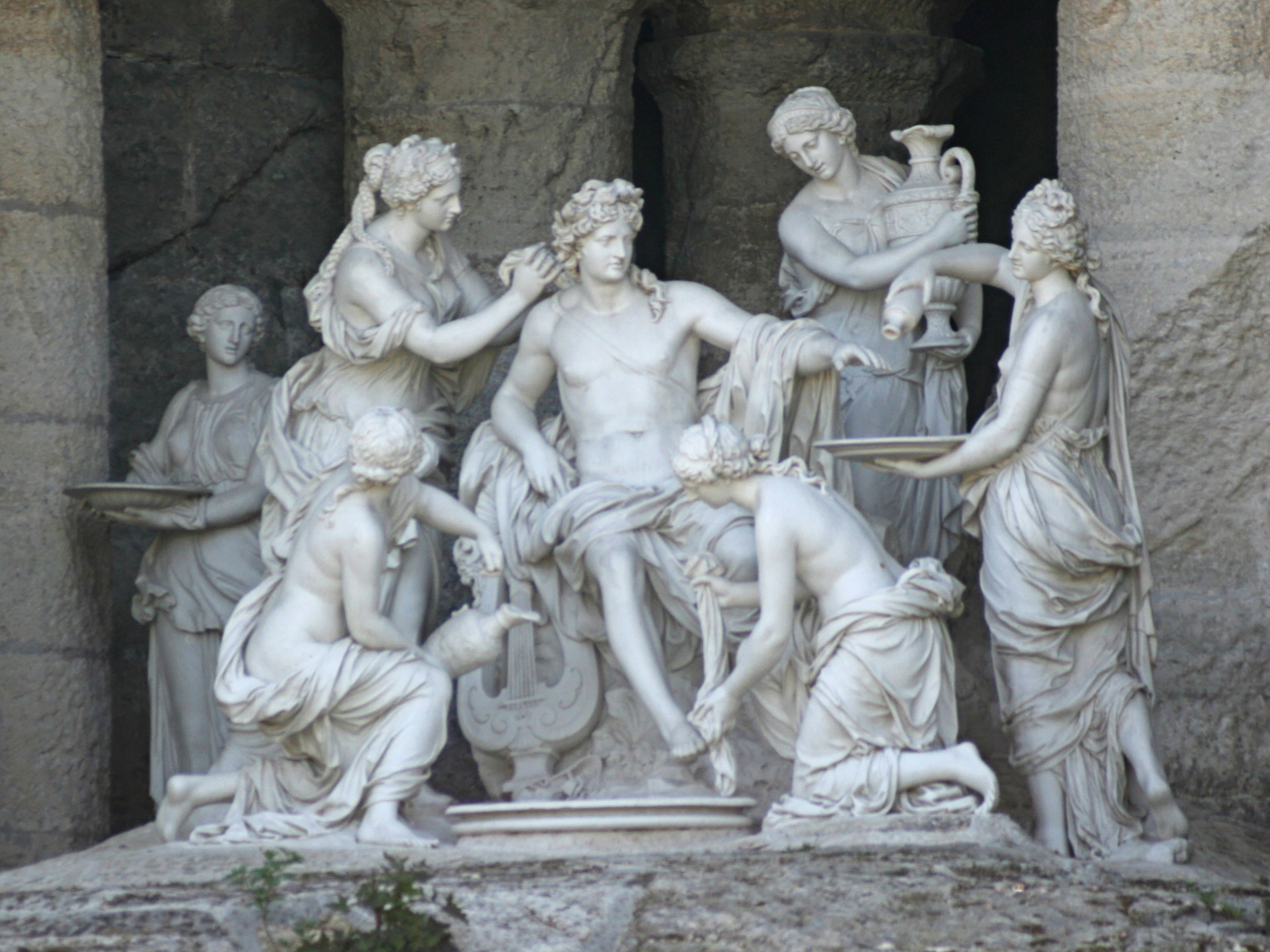
Apollo Attended to by the Nymphs
Palace of Versailles garden, Versailles, France
1666–1672
Marble
Speaking of royalty, the Royal Chapel at Versailles was added in 1698 and designed to emulate the Italian Baroque style of church design. Although it’s rather small compared to the larger churches that it’s emulating, it achieves a dramatic sense of verticality in the way the Corinthian-style colonnade supports a large clerestory, nave, and apse that are of equal height. The illusionistic ceilings recall earlier examples of Italian ceiling frescoes.
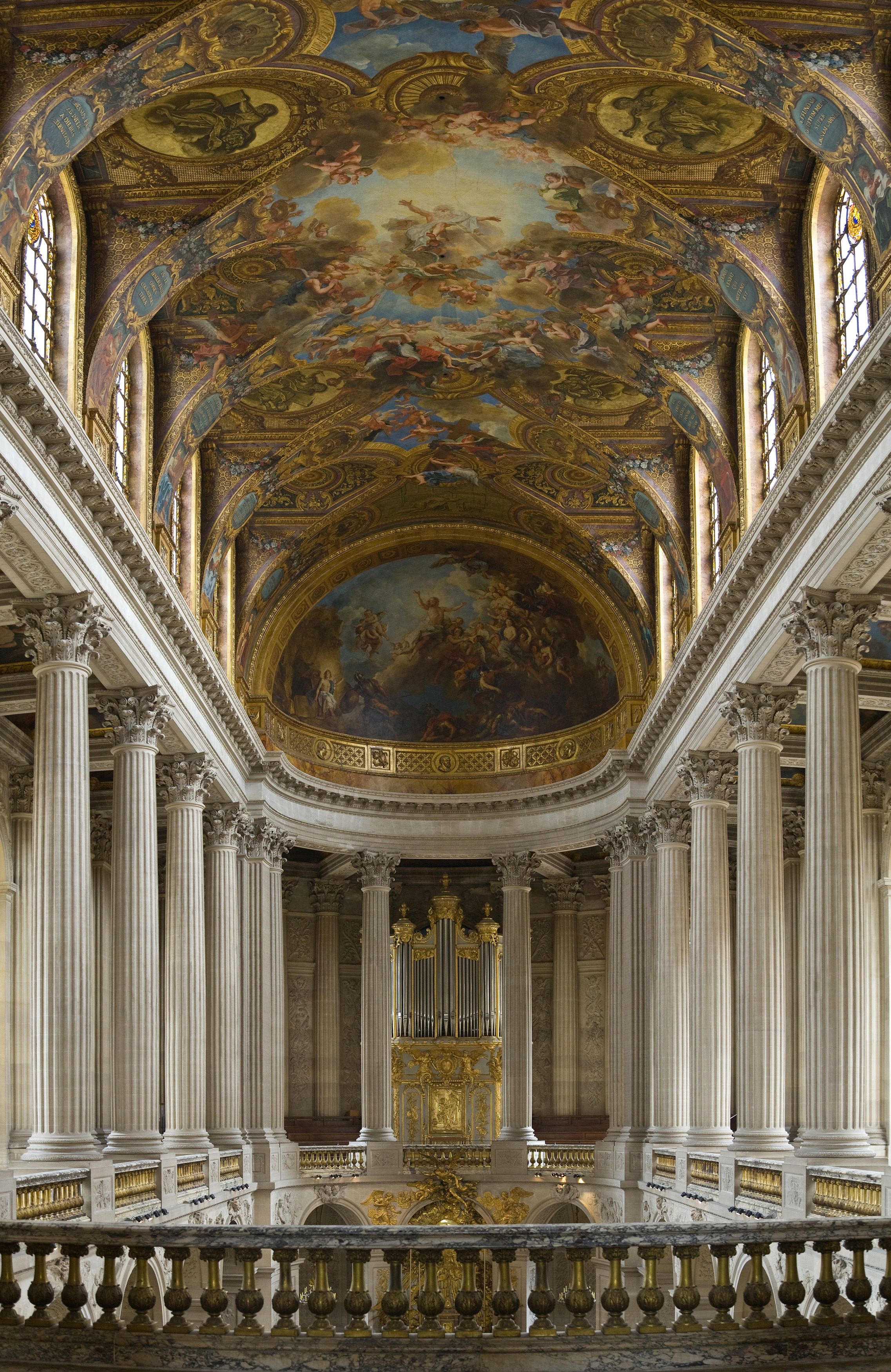
Royal Chapel
Palace of Versailles, Versailles, France
1698–1710
The chapel exists as a further example of the majesty of Versailles. The entire complex at Versailles, from its use of expensive building materials (like in the Hall of Mirrors) to its gardening and landscaping techniques (like trimming the trees into cone shapes or the French parterres that were in the shape of a tapestry), emphasize a display of wealth, dominance over the landscape, and the absolute authority of Louis the XIV.
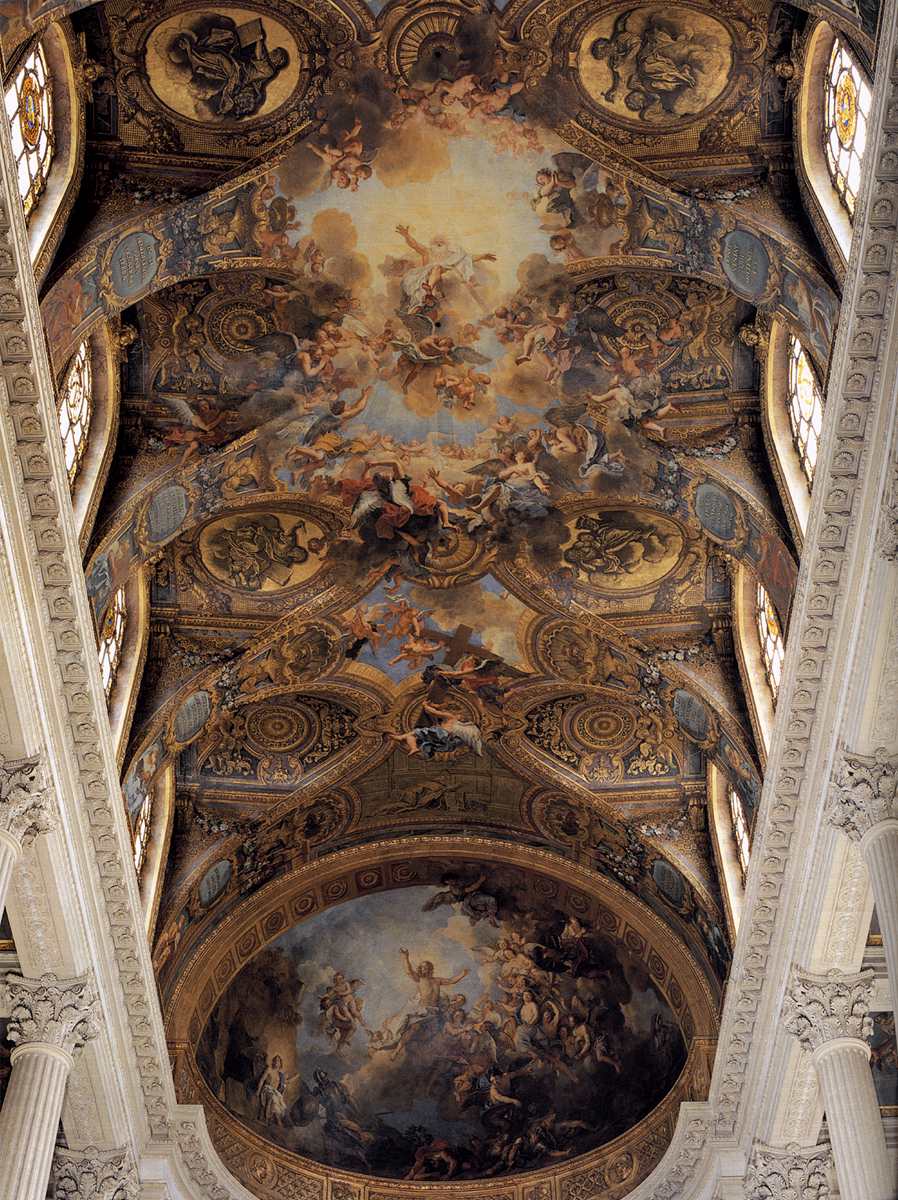
Vault decoration of the Royal Chapel
Palace of Versailles, Versailles, France
1709
Fresco
Source: THIS TUTORIAL WAS AUTHORED BY IAN MCCONNELL AND TAMORA KOWALSKI FOR SOPHIA LEARNING. PLEASE SEE OUR TERMS OF USE.